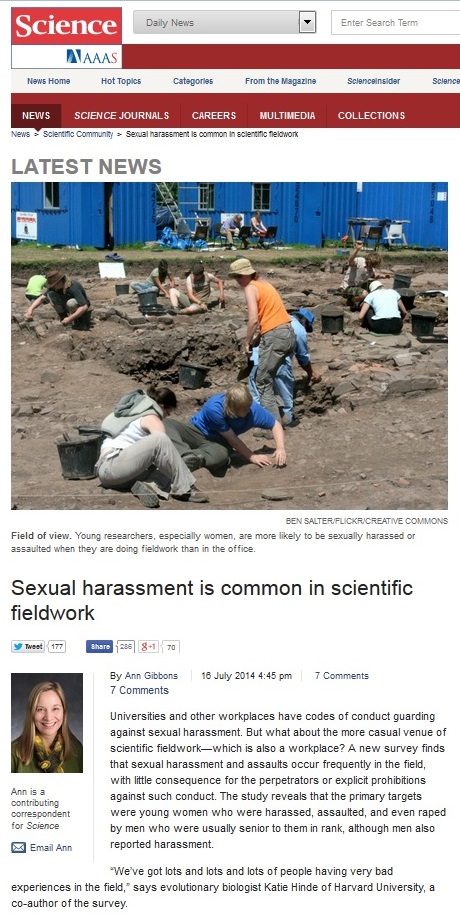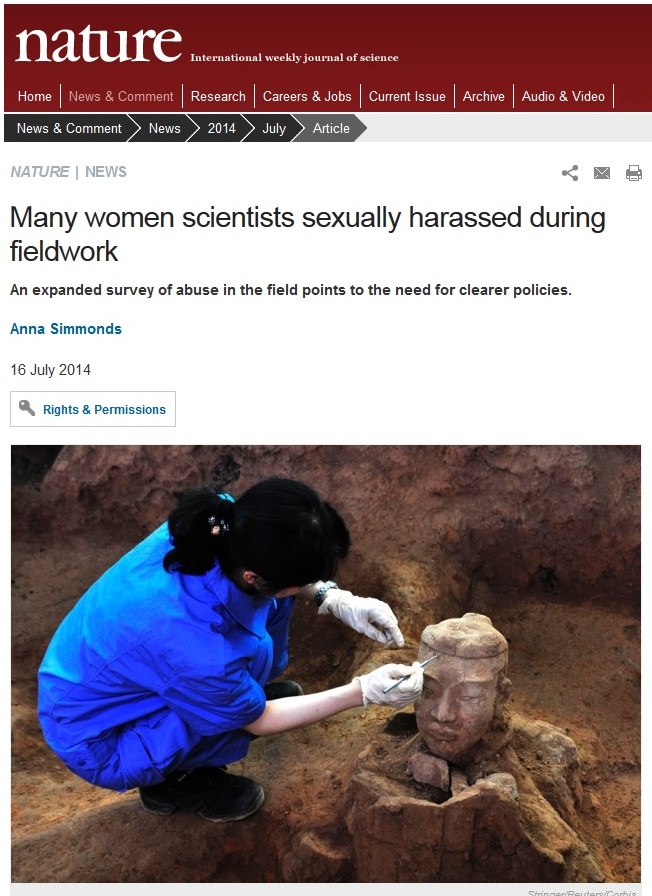Welcome to Our Summer Interns!
Meet Grayson and Grace—two of our outstanding summer interns at the Ohio History Connection!
 A new study of sexual harassment in scientific fields has revealed disturbing if hardly surprising results. Sexual harassment in scientific fieldwork settings is occurring at alarming frequencies and too many men are oblivious to the problem. A large majority (72%) of all respondents to the survey reported that “they had directly observed or been told about the occurrence of other field site researchers and/or colleagues making inappropriate or sexual remarks at their most recent or most notable field site.” And sadly “men were more likely to report that comments never occurred, whereas women were more likely to report that comments occurred frequently.” That’s bad enough, but it’s actually much worse. “Over 20% of respondents reported that they had personally experienced sexual assault: i.e. physical sexual harassment, unwanted sexual contact, or sexual contact in which they could not or did not give consent, or felt it would be unsafe to fight back or not give consent.” The main reason the victims “felt it would be unsafe to fight back or not give consent” is that the “over 90% of women and 70% of men were trainees or employees at the time that they were targeted.” Although both men and women have been victims of sexual harassment, the overwhelming majority of victims were women: women respondents were “3.5 times more likely to report having experienced sexual harassment than men”; and “women were significantly more likely to have experienced sexual assault.” I take this issue personally, because nearly one fourth of the respondents to the survey self-identified as archaeologists. Moreover, I have witnessed numerous instances of sexual harassment over the course of my career in archaeology and too often I just accepted it as normal if regrettable.
A new study of sexual harassment in scientific fields has revealed disturbing if hardly surprising results. Sexual harassment in scientific fieldwork settings is occurring at alarming frequencies and too many men are oblivious to the problem. A large majority (72%) of all respondents to the survey reported that “they had directly observed or been told about the occurrence of other field site researchers and/or colleagues making inappropriate or sexual remarks at their most recent or most notable field site.” And sadly “men were more likely to report that comments never occurred, whereas women were more likely to report that comments occurred frequently.” That’s bad enough, but it’s actually much worse. “Over 20% of respondents reported that they had personally experienced sexual assault: i.e. physical sexual harassment, unwanted sexual contact, or sexual contact in which they could not or did not give consent, or felt it would be unsafe to fight back or not give consent.” The main reason the victims “felt it would be unsafe to fight back or not give consent” is that the “over 90% of women and 70% of men were trainees or employees at the time that they were targeted.” Although both men and women have been victims of sexual harassment, the overwhelming majority of victims were women: women respondents were “3.5 times more likely to report having experienced sexual harassment than men”; and “women were significantly more likely to have experienced sexual assault.” I take this issue personally, because nearly one fourth of the respondents to the survey self-identified as archaeologists. Moreover, I have witnessed numerous instances of sexual harassment over the course of my career in archaeology and too often I just accepted it as normal if regrettable.  You should read the original study, which is available online, or at least the summary articles by Ann Gibbons in the journal Science and Anna Simmonds in Nature. As the authors of the report conclude — “the study represents an important first step in recognizing that sexual harassment and assault occur during scientific field work.” So take the first step — gain a better understanding of the problem. But don’t stop there. We have to make meaningful efforts to change the workplace culture that allows this sort of thing to happen. Brad Lepper
You should read the original study, which is available online, or at least the summary articles by Ann Gibbons in the journal Science and Anna Simmonds in Nature. As the authors of the report conclude — “the study represents an important first step in recognizing that sexual harassment and assault occur during scientific field work.” So take the first step — gain a better understanding of the problem. But don’t stop there. We have to make meaningful efforts to change the workplace culture that allows this sort of thing to happen. Brad Lepper